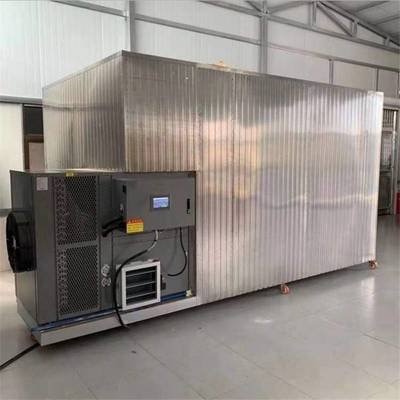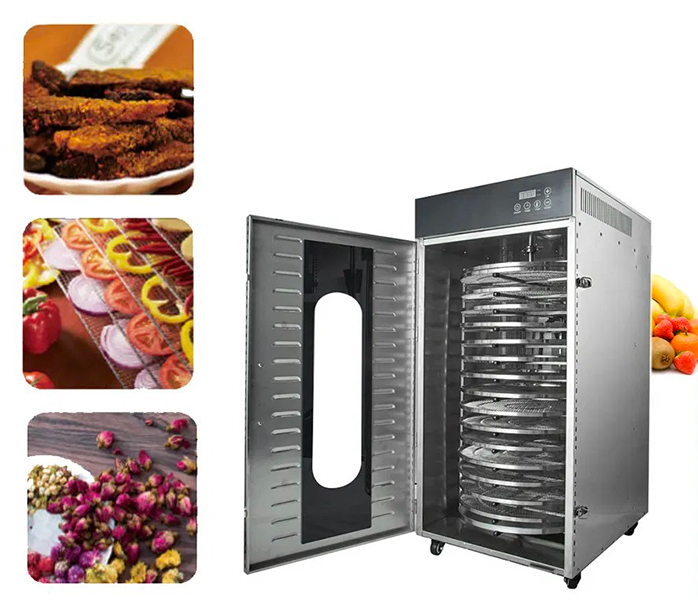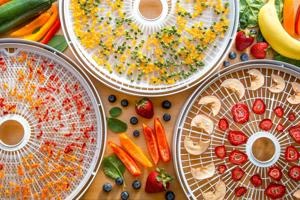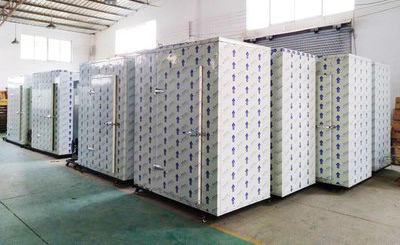
Content Menu
● Understanding Food Drying
>> Types of Food Dryers
● How Does a Heat Pump Food Dryer Work?
● Advantages of Heat Pump Food Dryers
>> 1. Energy Efficiency
>> 2. Improved Quality of Dried Foods
>> 3. Versatility
>> 4. Reduced Risk of Over-Drying
>> 5. Environmentally Friendly
● Disadvantages of Heat Pump Food Dryers
● Comparing Heat Pump Food Dryers with Traditional Dryers
● Applications of Heat Pump Food Dryers
● Best Practices for Using Heat Pump Food Dryers
● Conclusion
● FAQ
>> 1. What is a heat pump food dryer?
>> 2. How does a heat pump dryer compare in cost to traditional dryers?
>> 3. Can I use a heat pump dryer for all types of foods?
>> 4. Are there any downsides to using a heat pump dryer?
>> 5. How do I maintain my heat pump food dryer?
In the world of food preservation, drying is one of the oldest and most effective methods. The advent of modern technology has introduced various types of food dryers, among which heat pump food dryers have gained significant attention. This article explores the differences between heat pump food dryers and traditional dryers, examining their efficiency, cost-effectiveness, environmental impact, and overall performance.

Understanding Food Drying
Food drying is a process that removes moisture from food items to inhibit the growth of bacteria, yeasts, and molds. This method not only extends the shelf life of foods but also concentrates flavors and nutrients. Traditionally, drying was done using sunlight or air circulation. However, with advancements in technology, various types of food dryers have emerged.
Types of Food Dryers
- Traditional Dryers: These include solar dryers and convection ovens that rely on hot air to remove moisture.
- Heat Pump Food Dryers: These utilize a heat pump system to efficiently transfer heat from the environment to the food being dried.
How Does a Heat Pump Food Dryer Work?
A heat pump food dryer operates by using a refrigeration cycle to extract moisture from food. It works as follows:
1. Evaporation: The heat pump extracts heat from the air and uses it to evaporate moisture from the food.
2. Condensation: The moisture is then condensed and removed from the drying chamber.
3. Heat Recovery: The heat generated during condensation is recycled back into the system, improving energy efficiency.
This cycle allows for precise control over temperature and humidity levels, ensuring that food is dried evenly without compromising quality.
Advantages of Heat Pump Food Dryers
1. Energy Efficiency
Heat pump food dryers are significantly more energy-efficient than traditional dryers. They can achieve drying temperatures at lower energy costs due to their ability to recycle heat. This efficiency translates into lower electricity bills and a reduced carbon footprint.
2. Improved Quality of Dried Foods
The controlled environment of a heat pump dryer allows for better preservation of nutrients and flavors compared to traditional methods. The lower drying temperatures help maintain the integrity of vitamins and minerals in fruits and vegetables.
3. Versatility
Heat pump food dryers can handle a wide variety of foods, including fruits, vegetables, meats, and herbs. This versatility makes them suitable for both commercial and home use.
4. Reduced Risk of Over-Drying
Traditional dryers often lead to uneven drying or over-drying due to their reliance on high temperatures. Heat pump dryers minimize this risk by allowing for gradual moisture removal.
5. Environmentally Friendly
Heat pump technology is inherently more environmentally friendly than traditional methods. By consuming less energy and reducing greenhouse gas emissions, these dryers contribute positively to sustainability efforts in food processing.
Disadvantages of Heat Pump Food Dryers
While heat pump food dryers offer numerous advantages, they also come with some drawbacks:
- Higher Initial Cost: The purchase price of heat pump dryers can be higher than traditional models.
- Longer Drying Times: Although they are energy-efficient, heat pump dryers may take longer to dry foods compared to traditional methods.
- Complex Maintenance: Heat pump systems can be more complex than traditional dryers, potentially requiring specialized maintenance or repairs.

Comparing Heat Pump Food Dryers with Traditional Dryers
| Feature | Heat Pump Food Dryer | Traditional Dryer |
| Energy Efficiency | High | Moderate |
| Initial Cost | Higher | Lower |
| Drying Time | Longer | Shorter |
| Quality Preservation | Excellent | Variable |
| Versatility | Broad (fruits, vegetables, meats) | Limited (mostly fruits and vegetables) |
| Environmental Impact | Positive (lower emissions) | Negative (higher energy consumption) |
Applications of Heat Pump Food Dryers
Heat pump food dryers are increasingly being used in various sectors due to their efficiency and quality preservation capabilities:
- Commercial Food Processing: Many businesses in the food industry are adopting heat pump technology for large-scale drying operations. This includes companies producing dried fruits, vegetables, herbs, and even meats like jerky.
- Home Use: With rising interest in home gardening and self-sufficiency, many individuals are investing in heat pump food dryers for personal use. This allows them to preserve seasonal produce effectively while maintaining quality.
- Research Institutions: Universities and research facilities often use heat pump technology for studies related to food preservation methods and nutritional analysis.
Best Practices for Using Heat Pump Food Dryers
To maximize the benefits of a heat pump food dryer, consider the following best practices:
1. Pre-Treatment: Some foods benefit from pre-treatment before drying. For example, blanching vegetables can help preserve color and nutrients.
2. Proper Loading: Ensure that trays are not overcrowded; proper airflow is essential for even drying.
3. Monitoring Conditions: Regularly check temperature and humidity settings according to the type of food being dried for optimal results.
4. Regular Maintenance: Keep the dryer clean and well-maintained to ensure efficient operation over time.
5. Experimentation: Different foods may require different drying times and temperatures; experimenting can lead to better results tailored to specific preferences.
Conclusion
In conclusion, while both heat pump food dryers and traditional dryers have their merits, heat pump technology stands out for its energy efficiency and ability to preserve food quality. For those looking to invest in a dryer that offers long-term benefits in terms of energy savings and superior product quality, a heat pump food dryer is undoubtedly the better choice.

FAQ
1. What is a heat pump food dryer?
A heat pump food dryer is an advanced drying system that uses a refrigeration cycle to efficiently remove moisture from food while preserving its quality.
2. How does a heat pump dryer compare in cost to traditional dryers?
Heat pump dryers typically have a higher initial purchase cost but offer significant savings in energy bills over time due to their efficiency.
3. Can I use a heat pump dryer for all types of foods?
Yes, heat pump food dryers are versatile and can be used for various foods including fruits, vegetables, meats, and herbs.
4. Are there any downsides to using a heat pump dryer?
The main downsides include a higher initial cost and potentially longer drying times compared to traditional methods.
5. How do I maintain my heat pump food dryer?
Regular maintenance includes cleaning filters, checking seals for leaks, and ensuring proper airflow around the unit for optimal performance.












